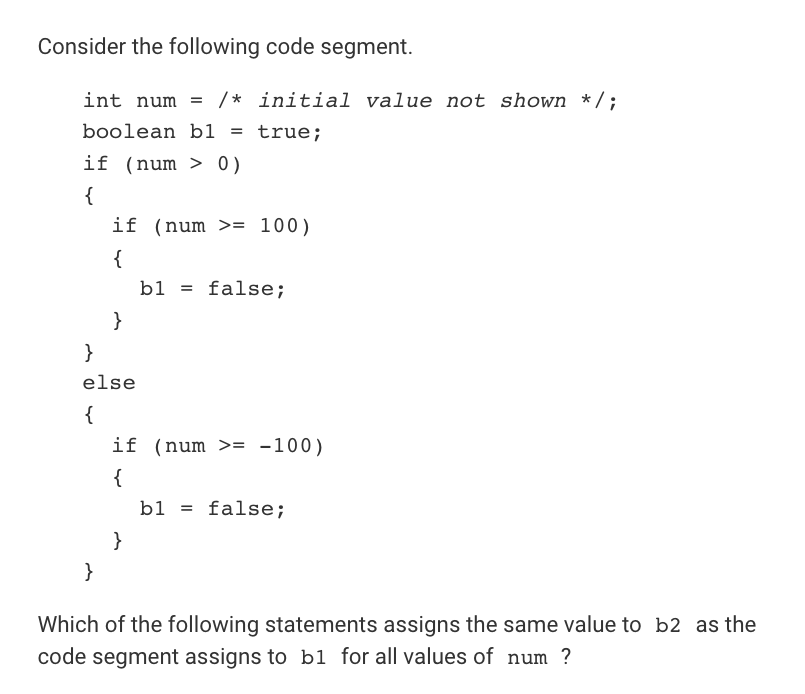66 Question Test Review
Collegeboard Practice Test Corrections
Experience
The test took me roughly over an hour to complete. I had to guess on some of the questions and reference google and different websites. I definitely am rusty on multiple choice after not practicing it for a long time. I feel like we spent a lot of time on FRQ review so far this trimester that I'll perform better on that section of the test. I feel as though I did better on the recursion problems though which was a concept I struggled with on the test we took at the end of Trimester 1.

- Answer is choice > 10 because when choice is greater than 10, code segment A will print "blue" and the else statements are not executed. Code segment B will print "blue" but will then execute the next if statement and print "yellow." So, different values will be produced.

- Answer: The two code segments print the same value only when grade is below 80. Code segment I uses else statements so points increase by a single digit. Code segment II does not use else statements and points can increase multiple times. 80 and above is when the segments print the same.

- Line 8 should be changed to for (int[] row: arr) because Line 8 should assign a row a 1D array of numbers. The original code tries to assign a row of col, but col is not a two-dimensional array.

- (a < b) || (c < d) because using De Morgan's law, the given expression is the same as this one

- Answer: 5, 10, 15, 20, 25, 30, 35, 40 because the Boolean expression in the outer loop is row <= arr.length instead of row < arr.length. Any value of arr that doesn't have 0 can be used to show that the method does not work as intended.

- The largest value in the arr is negative since maxVal is initialized to a value that is greater than all values in arr, maxVal will never be updated and 0 will be returned. To correct this, maxVal could be initialized to the first element in arr or initialized to Integer.MIN_VALUE.
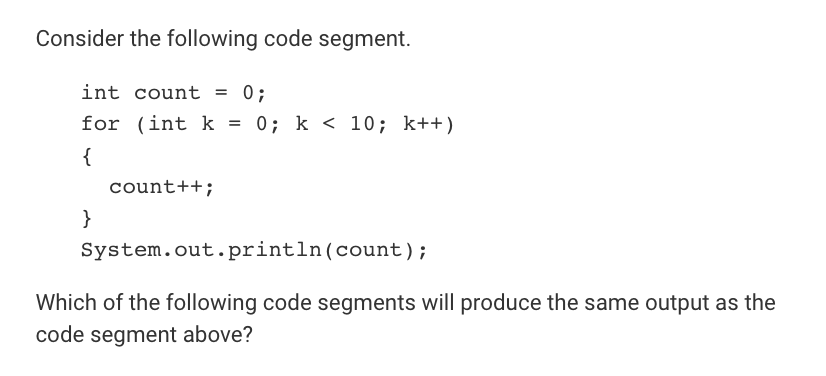
- Answer: int count = 0;
for (int k = 9; k >= 0; k--)
{
count++;
}
System.out.println(count);
The loop iterates 10 times. In each iteration, count is incremented by 1. Since the initial value of count is 0, the printed value of count is 10.
- Line 4 only
- Answer: boolean b2 = (num < -100) || (num > 0 && num < 100); because in the body of the first if clause in the code segment, b1 retains the value true if num is between 0 and 100, exclusive. In the body of the else clause, b1 retains the value true if num is less than -100. The statement assigns true to b2 if num is less than -100 or between 0 and 100, exclusive.
-
Answer: Insert the following statement before Line 1.
if (numVals == 1
return nums[0];
- Answer: mystery(true, false, true) because since a is true, !a is false and the body of the first if statement is not executed. Since b is false, the body of the second if statement is not executed. Since c is true, the body of the third if statement is executed and the value 7 + 4 = 11 is returned.

- Answer: In lines 1, 2, and 3, the text that appears in parentheses should be enclosed in quotation marks.
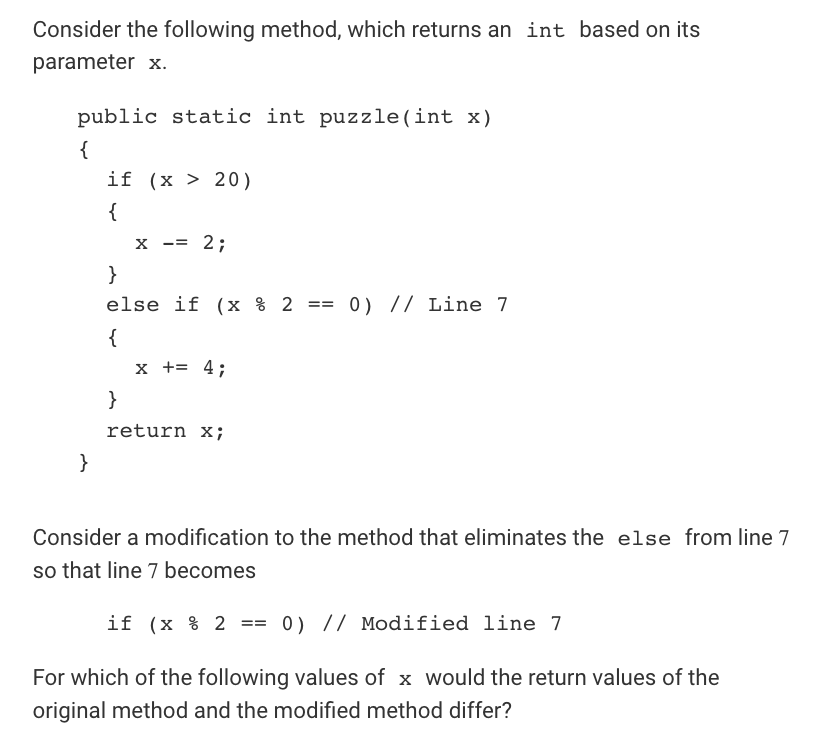
- The answer is 22 because in the original method, the call puzzle(22) returns 20. The first condition evaluates to true, so x is decreased by two and 20 is returned. In the original method, when the condition in the if statement evaluates to true, the second condition, in the else if clause, is not evaluated. For the modified method, the first condition still evaluates to true and x is decreased by two. But now the second condition appears in an if statement, instead of in an else if clause, so the second condition is evaluated, found to be true, and x is increased by four. This results in the value 24 being returned.
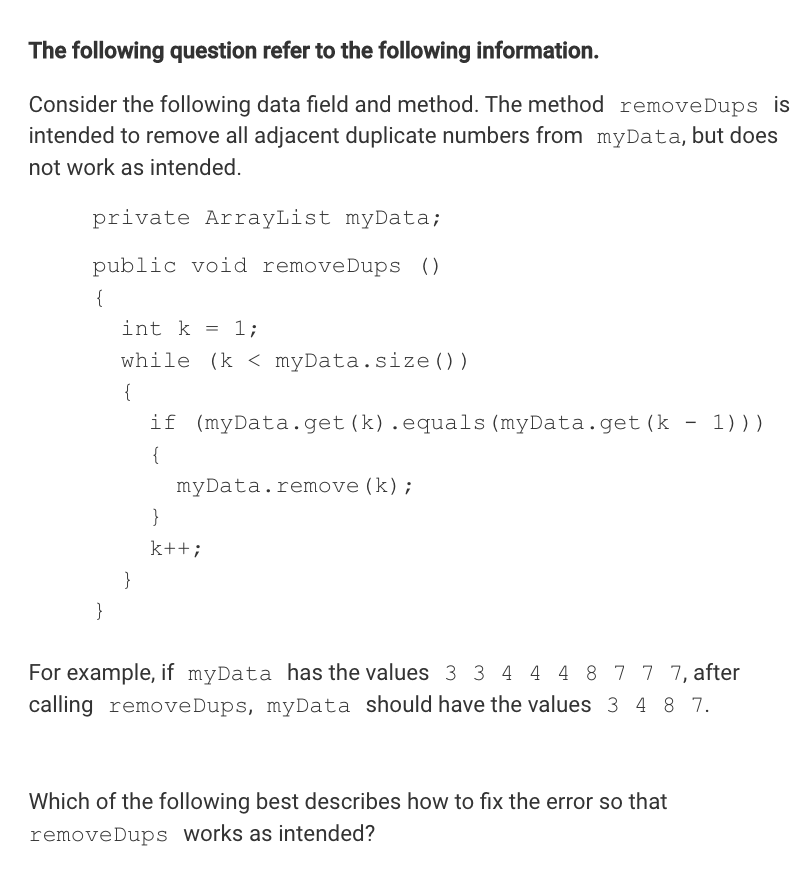
- Answer: There should be an else before the statement k++;
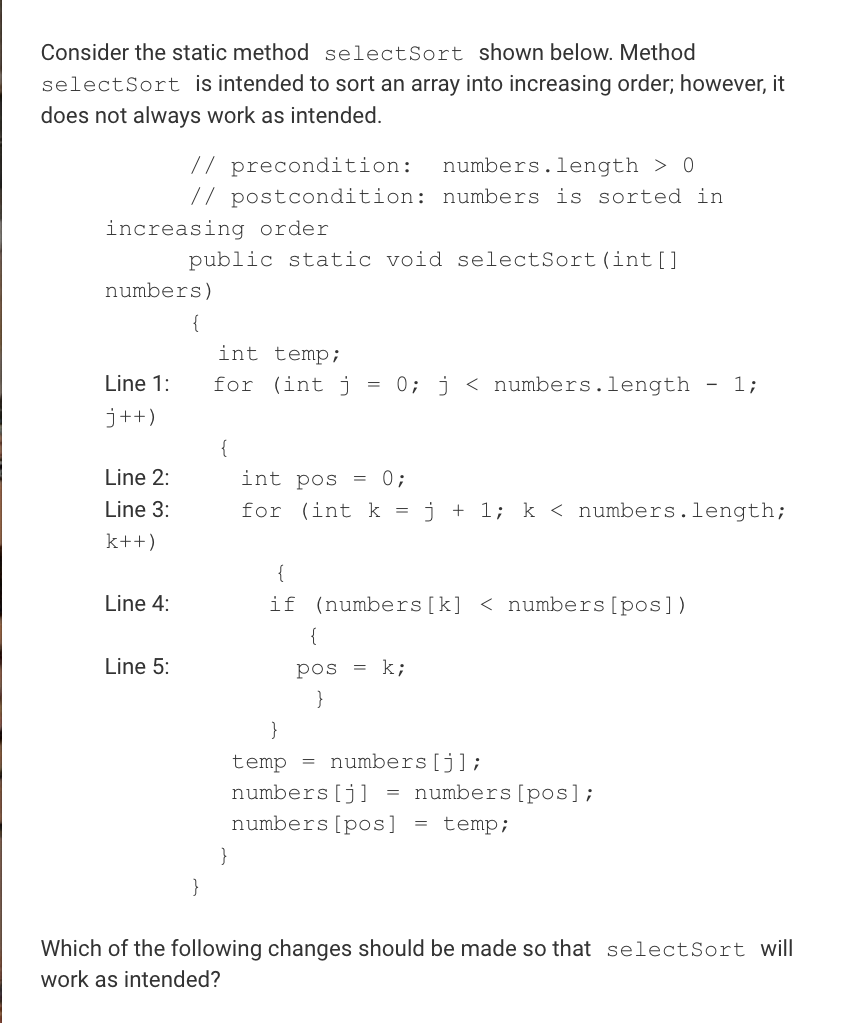
-
Answer: Line 2 should be changed to
int pos = j;
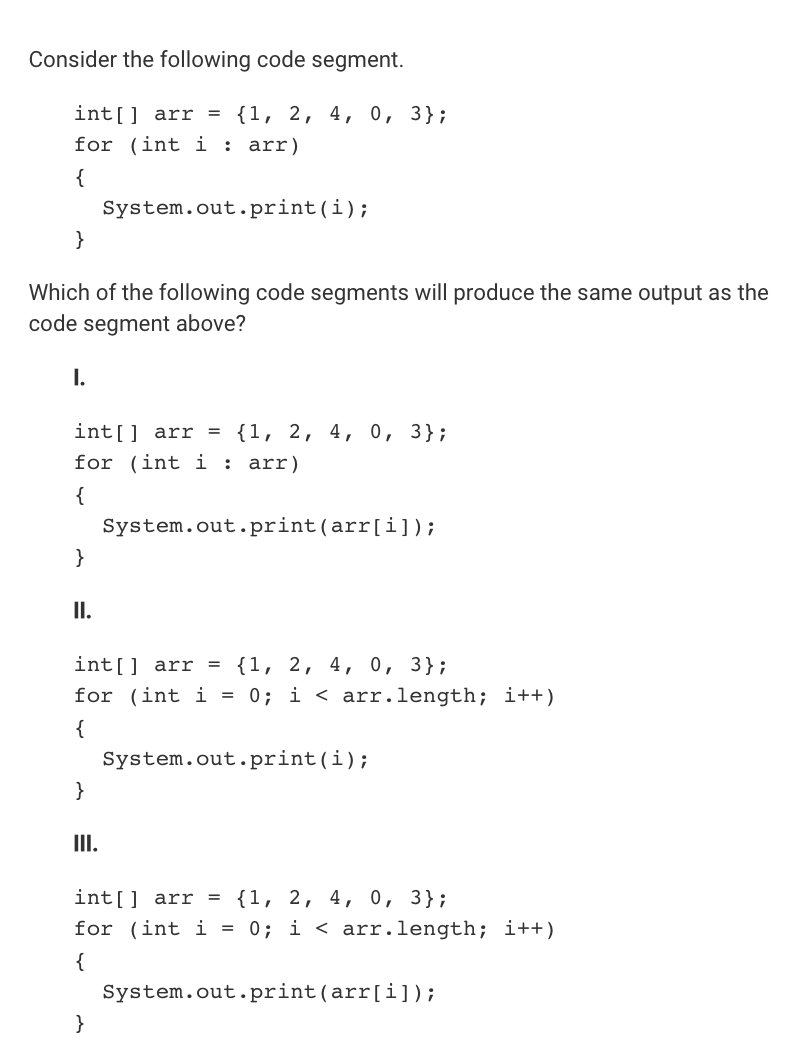
- Answer: III only because the given code segment prints the array elements in order from left to right using an enhanced for loop. Code segment I uses elements as indices. The first element of arr is 1, and arr[1] is 2; the second element is 2, and arr[2] is 4; the third element is 4, and arr[4] is 3; etc. Code segment II prints the indices 0 to 4 in order. Code segment III prints the array elements in order from left to right using a for loop.
- Answer: 115

